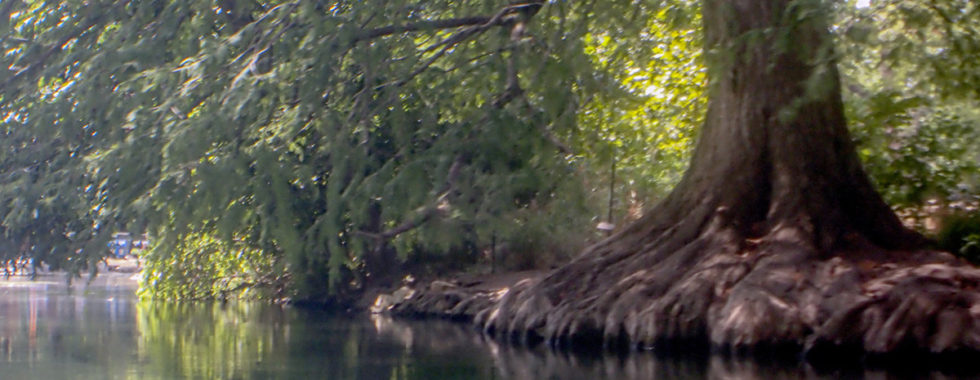For the Love of Trees: Bald Cypress
If I could be any tree in Texas through the dog days of summer it would be a Bald Cypress. Lining the cool damp banks of our waterways extending its artful maze of gnarled roots into the water, these gals are really living the life.
Related to the majestic redwoods rather than actual cypress, Taxodium distichum, flourish in steamy swamplands where most species would rot or suffocate. This towering stately tree can reach heights of 100 feet or more and is easily recognizable with its deeply furrowed bark that serves as a showy contrast to the feathery lushness of its foliage.
My love for trees extends well beyond their aesthetic benefits to what they may offer medicinally, and the Bald Cypress has captured my full attention. Although my expertise is with native European trees, I am on a mission to deepen my understanding of the rich resources right here in Texas. The fact that Bald Cypress thrives in swamplands alone should be an attention grabber. The soil conditions all trees prefer are often a clear indication of what they offer the body. In Europe, trees that like similar conditions are known as water regulators. The Common Alder, Alnus glutinosa, is a fine example that prefers to grow with its “feet” in the water, much like our native Bald Cypress. Tinctures from the buds of Alnus Glutinosa are known for moving inflammation from a site of injury or response to a pathogen. Observing the mucky swamps where the Bald Cypress thrive leads me to believe these trees hold considerable potential for healing.
Researching the historical medicinal uses I discovered that the cones, seeds, leaves, and bark have all been used for medicinal purposes. The Aztecs collected and used the resin from the Bald Cypress to topically treat burns and sores, and also used parts of the tree to resolve ulcers and to help skin heal. In more recent times, the leaves and seeds have been used to treat malaria and liver diseases. Various parts of the tree have been used to prepare ointments or infusions for heart disease, hemorrhoids, gout, ulcers, bronchitis, and diarrhea. All these conditions are inflammatory conditions, and that ties in nicely with my comparison with Common Alder.
The bark of Bald Cypress has been used to make cordage. The wood is resistant to warping or shrinking. Called “the wood eternal” because its heartwood is resistant to decay, Bald Cypress is used for heavy construction, including docks, warehouses, boats, and bridges, as well as general millwork and interior trim.
Native to Texas as well as many southern states, Bald Cypress is easily spotted along the Gulf coast and inland waterways. Close to home we can find some gorgeous examples on the Texas State Campus and trails along the San Marcos River.
Written by Lauren Hubele, a member of SMGA’s Outreach Committee. She is an author and educator whose practice provides a framework for resolving chronic and acute conditions using gemmotherapy, homeopathy, and a plant-based diet.


